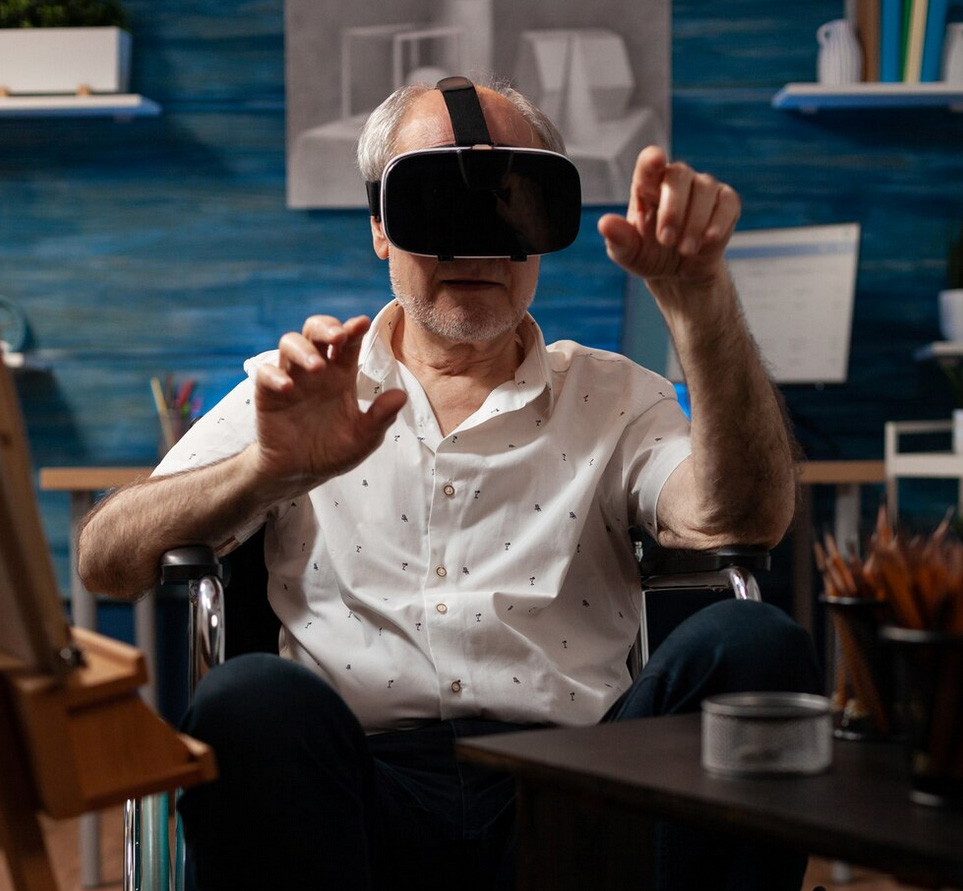
An image which may or may not be related to the article. FREEPIK
Accessibility in Games: Why Everyone Deserves to Play
Summary:
Video games are meant to be a universal medium—a place where everyone can escape, compete, and create. Yet, for far too long, accessibility has been an afterthought in game development. That’s starting to change. With innovations like customizable controls and audio cues, developers are redefining what it means to make games for everyone. But are these efforts enough, or just the beginning? Let’s explore how accessibility is shaping the future of gaming and why inclusion isn’t just important—it’s essential.
This isn’t just an oversight; it’s an indictment of an industry that has long treated accessibility as an optional bonus rather than a necessity. But something is shifting. Developers are waking up to the fact that inclusion isn’t just good PR—it’s good design. And in the process, they’re showing us that games can be more than just entertainment. They can be a bridge, a lifeline, a way to say, “You belong here, too.”
The Case for Inclusion
Why does accessibility matter? The answer is painfully obvious: because gaming, at its core, is about connection. It’s about the joy of solving a puzzle, the thrill of defeating a boss, and the camaraderie of online multiplayer. These experiences shouldn’t be reserved for the lucky few who happen to fit the industry’s default mold.
Consider the numbers. According to the World Health Organization, over a billion people live with some form of disability. That’s a billion potential players—gamers who have been sidelined not by lack of interest, but by lack of options.
Imagine being a lifelong gamer suddenly diagnosed with a condition that makes it impossible to use a standard controller. Imagine trying to follow a narrative-rich RPG when you can’t hear the dialogue and subtitles are either missing or illegible. Imagine being told, through silence and inaction, that you don’t belong.
This is why accessibility matters. It’s not about charity or special treatment. It’s about basic fairness, about leveling the playing field so that everyone gets a chance to play.
Breaking Barriers with Innovation
Thankfully, the industry is starting to listen. Games like The Last of Us Part II have set new standards for accessibility, offering features like high-contrast modes, text-to-speech options, and fully customizable controls. These aren’t just tweaks; they’re game-changers, literally.
Microsoft’s Xbox Adaptive Controller is another shining example—a device that lets players create custom setups tailored to their abilities. It’s a piece of hardware that says, “You deserve to play, no matter how you play.”
And then there are indie developers, often leading the charge with creative solutions born from necessity. Titles like Celeste include assist modes that let players tweak difficulty settings to suit their needs, proving that accessibility doesn’t have to compromise challenge or fun.
These innovations aren’t just good for disabled players; they’re good for everyone. Features like subtitles, customizable controls, and difficulty adjustments make games more enjoyable for all players, whether they’re navigating a disability or simply trying to play in a noisy room.
The Roadblocks to True Accessibility
But let’s not get carried away with praise just yet. For every step forward, there are still miles to go. Too many games launch without even basic accessibility options, as if developers simply forgot that a significant portion of their audience exists.
Part of the problem is education—or the lack of it. Many developers don’t know where to start when it comes to accessibility, and the resources to learn are often scattered or inadequate. Budget constraints and tight deadlines don’t help, either. It’s easy for accessibility to get pushed to the back burner when the pressure is on to ship a game yesterday.
And then there’s the cultural hurdle. Accessibility is still seen by some as an afterthought, a nice-to-have rather than a must-have. This mindset needs to change, and it starts with holding the industry accountable. Players need to demand better, and developers need to listen.
Looking Ahead
The future of gaming could be a utopia for accessibility, but only if we make it one. Imagine a world where every game includes options for visual, auditory, and physical disabilities by default. Imagine a world where no gamer is left behind because of a design oversight.
This isn’t just wishful thinking. With organizations like AbleGamers and SpecialEffect leading the charge, and with players themselves becoming more vocal about their needs, the industry is slowly but surely moving in the right direction.
But we can’t stop here. Accessibility isn’t a trend; it’s a commitment—a promise that games are for everyone, no exceptions.
As I scroll through yet another online thread debating whether accessibility features “dumb down” games, I can’t help but shake my head at the sheer absurdity of it all. Making games more accessible doesn’t dilute their value; it enhances it. It’s not about making things easier—it’s about making things possible.
Because at the end of the day, games are more than just pixels and code. They’re experiences, connections, stories that we carry with us. And everyone deserves the chance to carry those stories, to be part of those worlds, to play.
The future of gaming isn’t just faster graphics or more immersive VR. It’s inclusion. It’s making sure that every player, regardless of their abilities, can pick up a controller and feel like they belong. And if that’s not worth fighting for, then what is?
 muppazine
muppazine